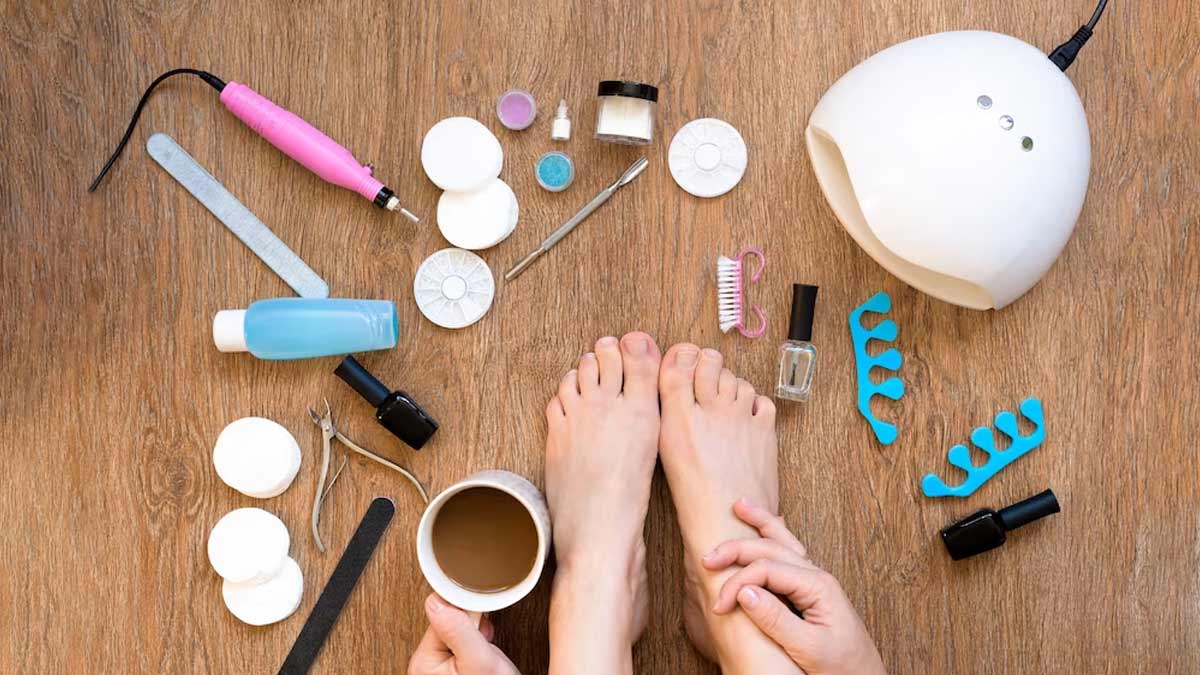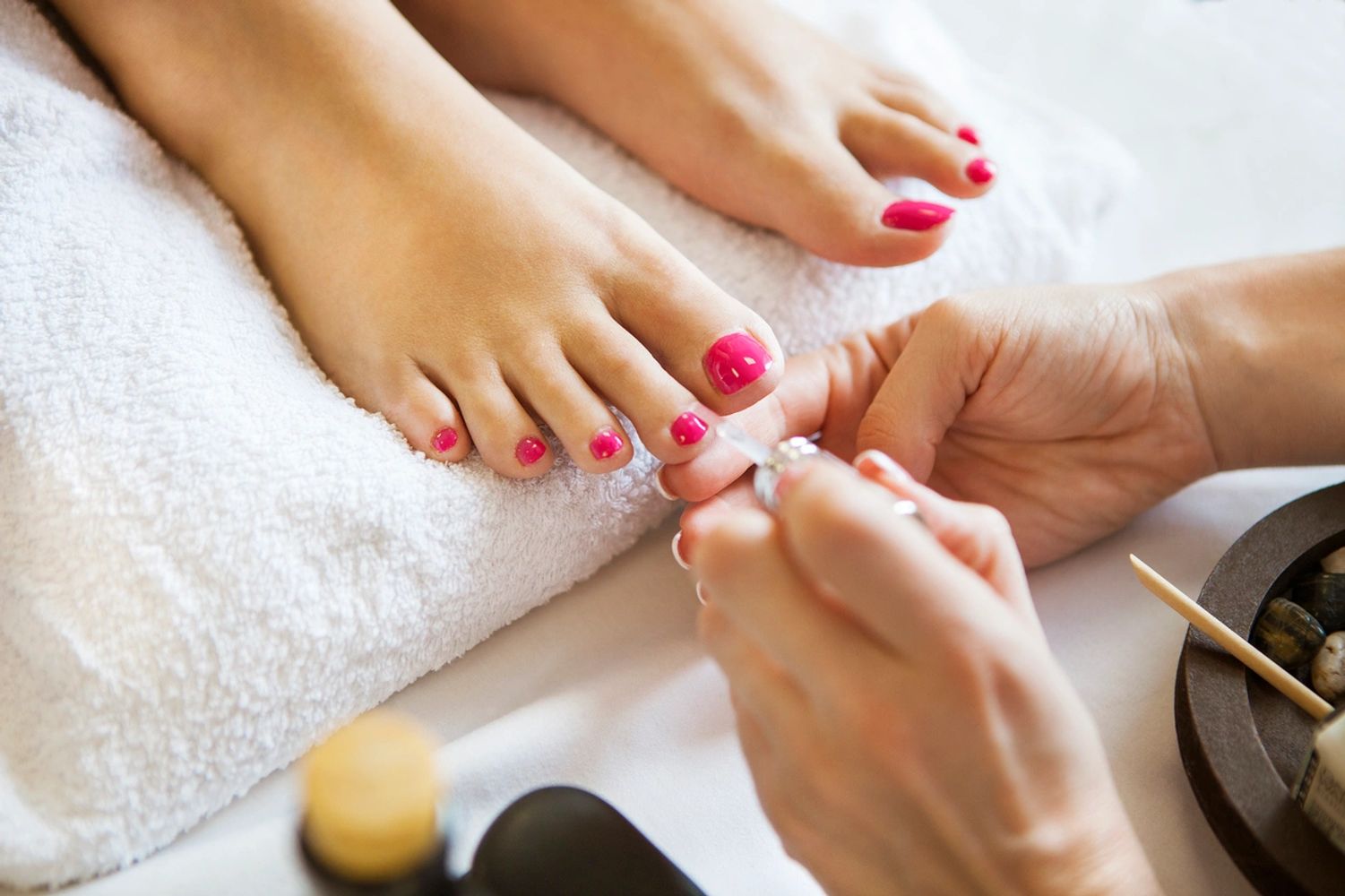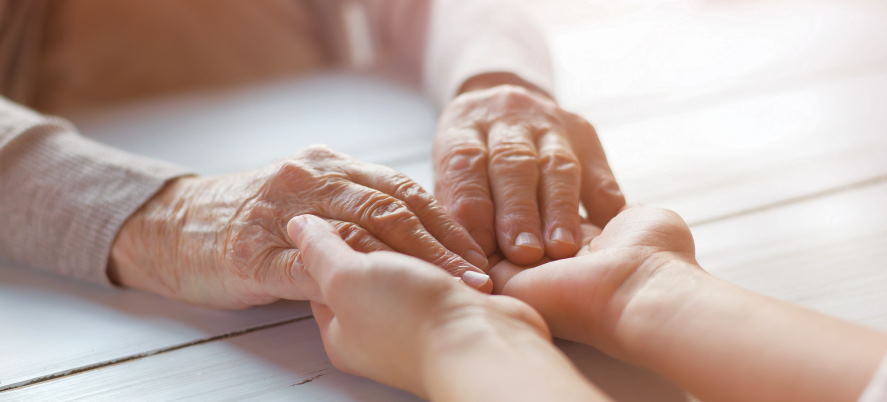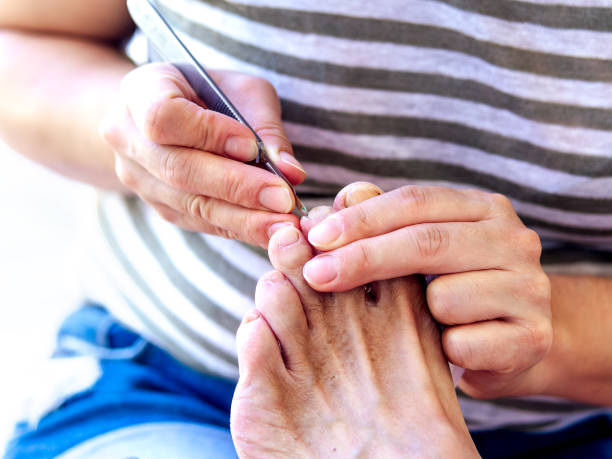AT-HOME PEDICURE FOR SENIORS, As we age, taking care of our feet becomes essential for overall well-being and mobility. For seniors, foot health can affect everything from balance to comfort, making proper foot care a crucial part of daily self-care. While regular visits to a professional podiatrist or salon are beneficial, an AT-HOME PEDICURE FOR SENIORS offers an effective and convenient way to ensure feet stay healthy and comfortable.
This guide will explore everything you need to know about at-home foot care, from the benefits to step-by-step instructions, helpful tools, and frequently asked questions. Whether you’re caring for your own feet or assisting a loved one, this guide will empower you to deliver safe, soothing, and effective Foot Care For Seniors right at home.

Foot health is critical for seniors, as it directly affects mobility, balance, and comfort. Feet tend to change as we age—they lose padding, become more prone to dryness, and can develop various ailments, such as bunions, calluses, and ingrown toenails. While pedicures might traditionally be seen as a luxury, for seniors, they are an essential aspect of self-care. An AT-HOME PEDICURE FOR SENIORS not only helps to maintain foot health but also provides a relaxing experience, boosts confidence, and improves overall quality of life.

Before beginning an at-home pedicure, gather the following tools and supplies to ensure a comfortable, effective experience:
Follow these steps to perform a safe, comfortable AT-HOME PEDICURE FOR SENIORS:
Ensure you have a clean, organized space with all necessary supplies within reach. Choose a comfortable, stable chair and make sure the senior is seated safely and comfortably.
Fill a basin with warm water (not too hot) and allow the feet to soak for 10-15 minutes. Adding a few drops of gentle soap or essential oils like lavender or tea tree can help soften the skin, relax the muscles, and add a pleasant aroma.
After soaking, gently clean the feet with a soft washcloth, paying attention to the areas between the toes. Dry the feet thoroughly with a towel, as any lingering moisture can lead to fungal growth.
Use a nail clipper to trim the nails straight across to prevent ingrown toenails. Be careful not to cut too short, as this can lead to discomfort. Use a nail file to smooth any sharp or rough edges. Avoid rounding the corners too much, as this can also increase the risk of ingrown toenails.
Carefully rub a pumice stone or foot file on areas with thick, dead skin or calluses, particularly the heels and balls of the feet. Be gentle, as over-exfoliating can cause irritation, especially for seniors with sensitive or thin skin.
Gently massage a thick moisturizing cream or foot lotion into the feet, focusing on the heels and other dry areas. Massage improves circulation, which is beneficial for foot health in seniors. Avoid applying lotion between the toes to reduce the risk of fungal infections.
If the senior has a history of fungal infections or excessive foot sweating, consider applying an antifungal powder to help keep the area dry and prevent infections.

Many seniors face common foot problems that can make walking or standing uncomfortable. Here are a few of the most common issues and some helpful solutions:
A: Ideally, seniors should receive foot care about once every two to four weeks, depending on their foot health and specific needs. Consistent care helps prevent common foot issues like dryness, calluses, and fungal infections, which can arise if left unattended. For seniors with diabetes or other health concerns, a healthcare provider may recommend more frequent or specific foot care routines to address any unique needs.
A: When performing Foot Care For Seniors, it’s crucial to take extra precautions. Seniors often have sensitive skin, so avoid using sharp or abrasive tools excessively. Ensure that tools are sanitized to prevent infection, especially if the senior has compromised immunity or poor circulation. Additionally, be gentle when massaging or filing to avoid causing cuts or irritation, as wounds can take longer to heal in older adults.


An AT-HOME PEDICURE FOR SENIORS is not only a means of keeping feet healthy and comfortable; it’s also a wonderful way to boost self-esteem and provide a bit of pampering. By addressing foot care regularly and carefully, seniors can enjoy better mobility, reduce discomfort, and maintain greater independence. For caregivers, this is an opportunity to help a loved one with something both practical and relaxing, ensuring they feel their best each day.
Remember, maintaining healthy feet is part of a healthy lifestyle, and with the right tools, techniques, and gentle care, you can ensure that your loved one’s feet are well taken care of without leaving home. Whether for yourself or a loved one, this at-home routine is a powerful tool in maintaining comfort, confidence, and well-being for years to come.